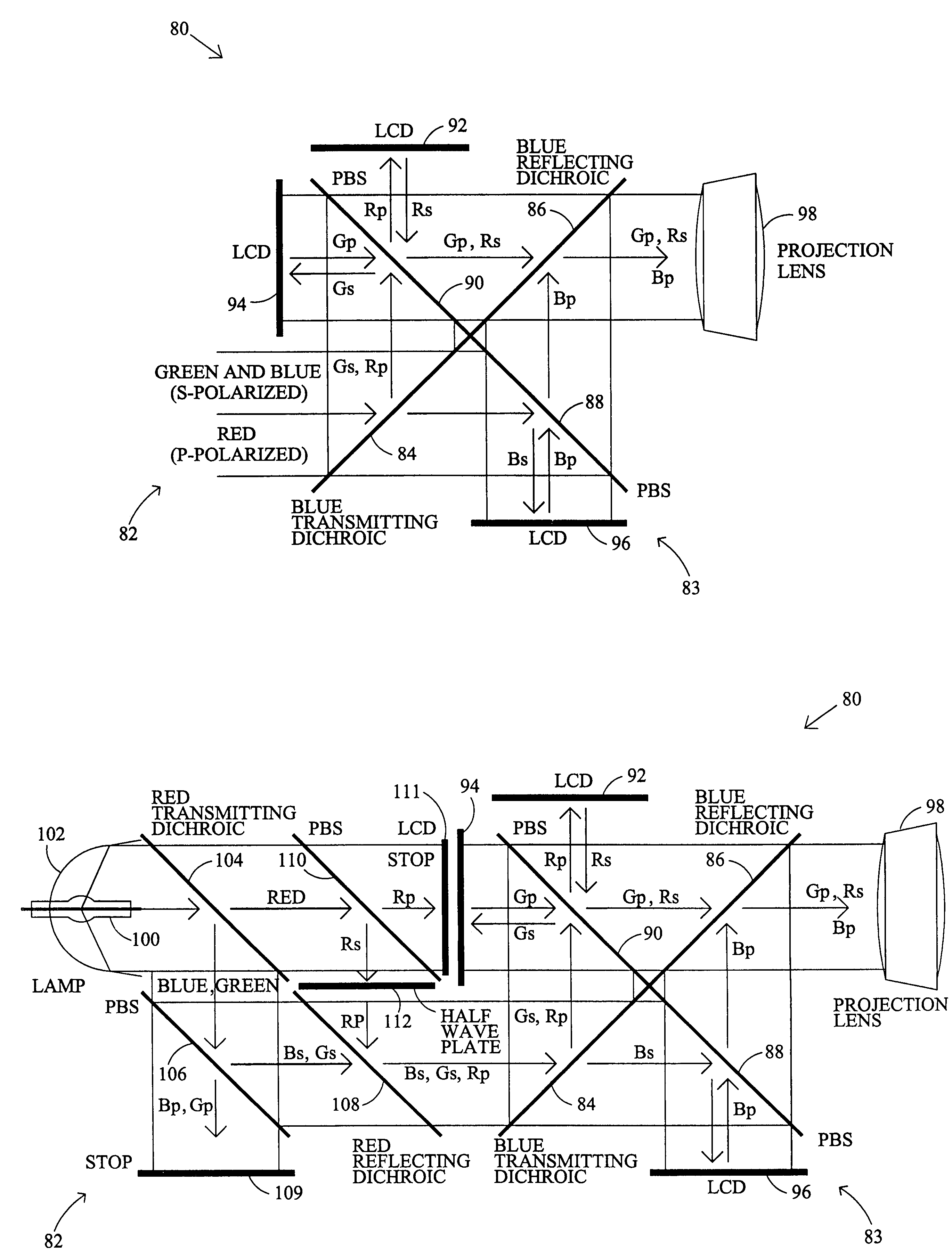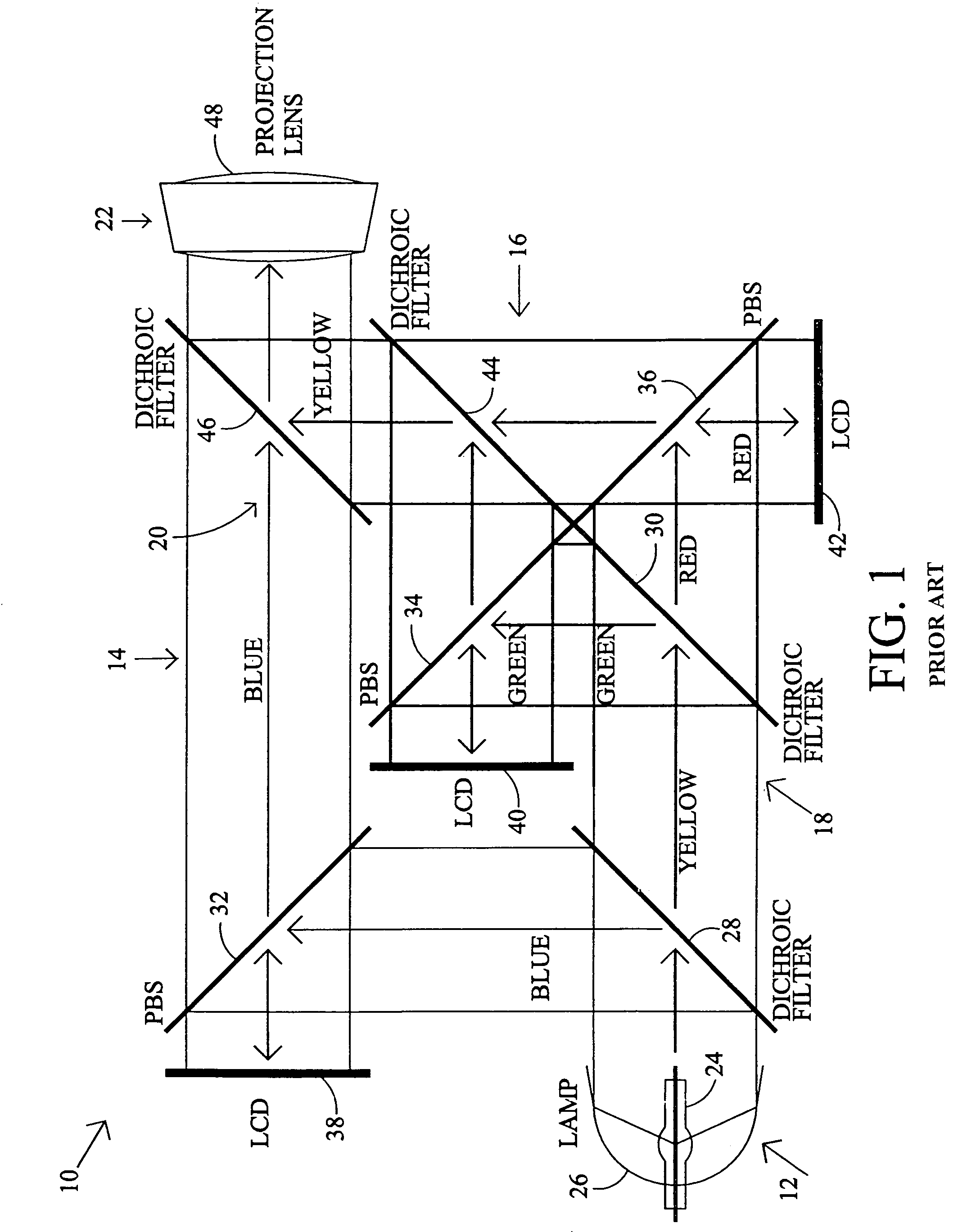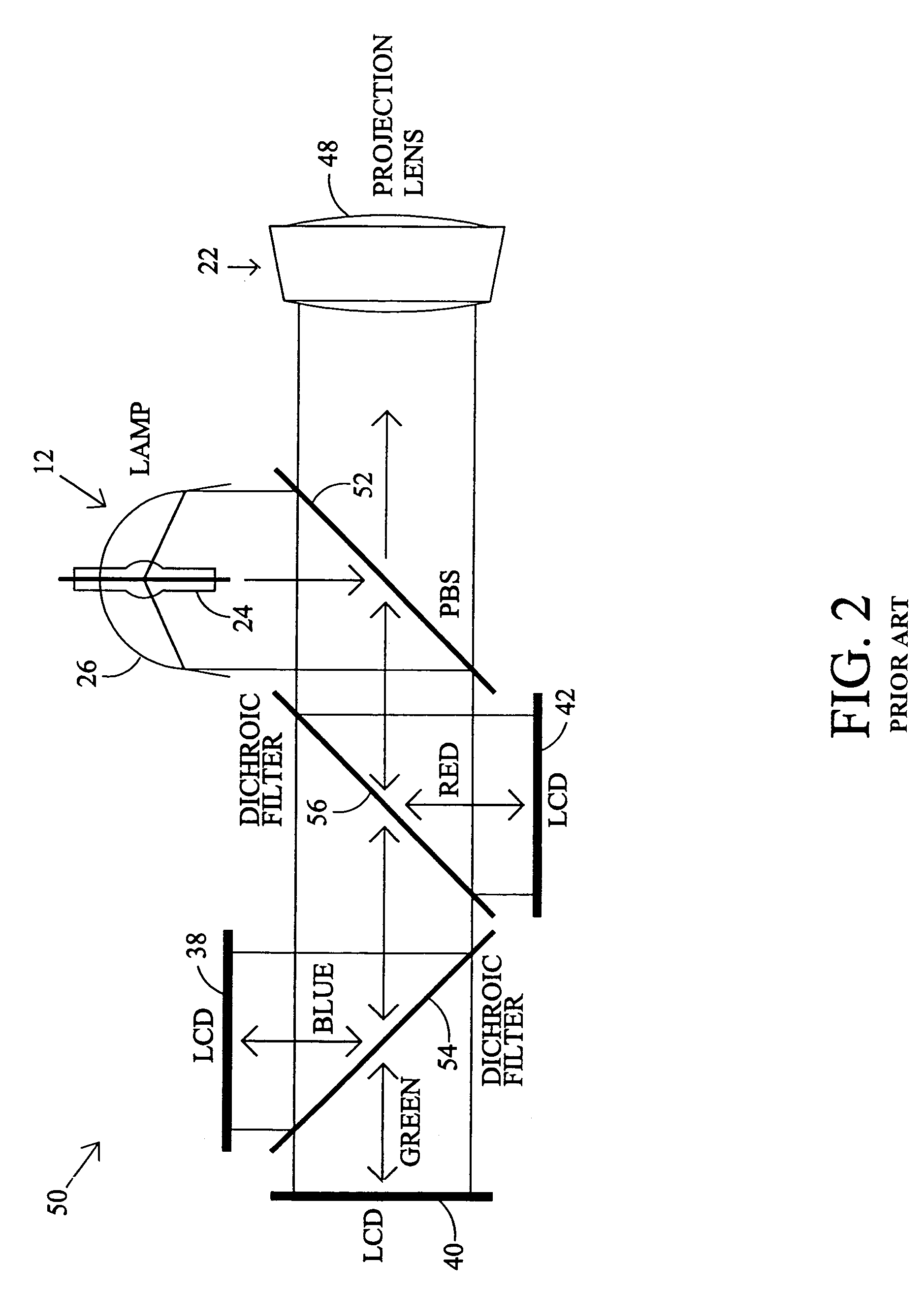Projection display system using polarized light
a technology of projection display and polarized light, which is applied in the field of projection display systems, can solve the problems of large number of components in this architecture, large physical size of the system, and requirement of a large back working distance for the projection lens, and achieve the effect of small back working distance from the projection lens and reduced manufacturing cos
- Summary
- Abstract
- Description
- Claims
- Application Information
AI Technical Summary
Benefits of technology
Problems solved by technology
Method used
Image
Examples
Embodiment Construction
[0060]1. Projection Display System
[0061]An exemplary embodiment of the projection display system of the present invention is shown generally at 80 in FIG. 4. System 80 includes a light source 82 and a projection system 83. Projection system 83 includes two dichroic filters (DF) 84, 86, and two polarizing beam splitters (PBS) 88, 90, to split up the incoming white light from light source 82 into red-green-blue (RGB) components before directing each light beam component to a specific light valve, or liquid crystal display (LCD), 92, 94, 96. LCDs 92, 94, 96 each provide a light-component-specific image, which is illuminated by the light beam component and reflected from the face of the LCD, carrying a color image component. The color image components are then recombined, and the reflected light is directed to projection lens 98.
[0062]A requirement for proper operation of projection system 83 is that the input illumination is pre-filtered and polarized so that the green and blue distrib...
PUM
 Login to View More
Login to View More Abstract
Description
Claims
Application Information
 Login to View More
Login to View More - R&D
- Intellectual Property
- Life Sciences
- Materials
- Tech Scout
- Unparalleled Data Quality
- Higher Quality Content
- 60% Fewer Hallucinations
Browse by: Latest US Patents, China's latest patents, Technical Efficacy Thesaurus, Application Domain, Technology Topic, Popular Technical Reports.
© 2025 PatSnap. All rights reserved.Legal|Privacy policy|Modern Slavery Act Transparency Statement|Sitemap|About US| Contact US: help@patsnap.com



